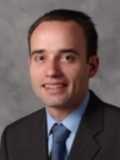Visiting Researchers
 |
Institute |
Georgia Institute of Technology |
Title |
Associate Professor | |
Country |
U.S.A. | |
Period of Stay |
2012/05/14 - 2012/08/11 | |
Research Theme |
Studies on the 2011 Tohoku tsunami inundation hydrodynamics and tsunamis generated by landslides and volcanic eruptions | |
Host Researcher |
Kenji SATAKE |
My research centers on tsunamis and coastal hazards such as submarine landslides and hurricane storm surges as well as their mitigation and coastal protection. I co-organized more than a dozen post disaster reconnaissance campaigns encompassing: 2011 Tohoku, 2010 Chile, 2010 Haiti, 2010 Mentawai, 2010 & 2007 Solomon Islands, 2009 Samoa & Tonga, 2007 Peru, 2006 Java and 2004 Indian Ocean tsunamis as well as several cyclonic storms (2008 Cyclone Nargis, 2007 Cyclone Gonu and 2005 Hurricane Katrina). Since joining Georgia Tech I led multiple-phases of fully 3-dimensional large scale landslide tsunami experiments at the NEES tsunami wave basin at Oregon State University.
After the March 11, 2011, Tohoku earthquake and tsunami I led a research team that deployed a terrestrial laser scanner with integrated GPS-measurements at locations of tsunami eyewitness video recordings. I came to ERI to determine tsunami hydrographs and surface current velocities in a multi-step process using the LiDAR point clouds, modeling and image processing techniques such as PIV. The impacted Sanriku coast represents a test bed both in terms of instrumentation along the coast to record tsunami waves at various water depth and recorded eyewitness videos of tsunami flooding, which will transform tsunami overland flow modeling, evacuation and design of engineered tsunami defenses.
Tsunamis are commonly associated with submarine earthquakes, such as the 2004 Indian Ocean tsunami. In contrast, some of the most catastrophic tsunamis are produced by volcanic eruptions and landslides such as at Mount Unzen and Krakatoa. Rare field measurements are mostly limited to landslide scarp, deposit, tsunami runup and eyewitness accounts. The ultimate long-term goal is to compensate missing field data by combined physical and numerical modeling of fully 3-dimensional volcanic tsunami scenarios.
For more information and publications visit my faculty profile: http://www.ce.gatech.edu/people/faculty/551/overview
